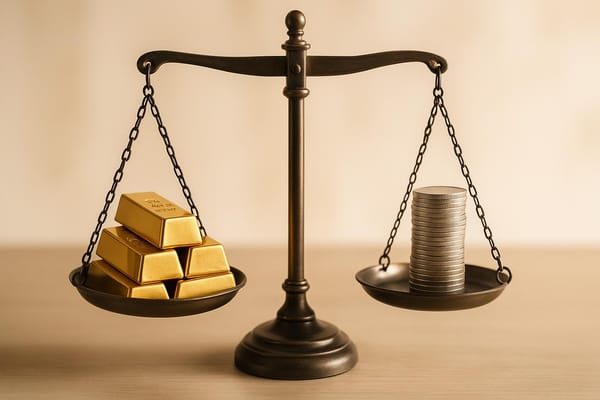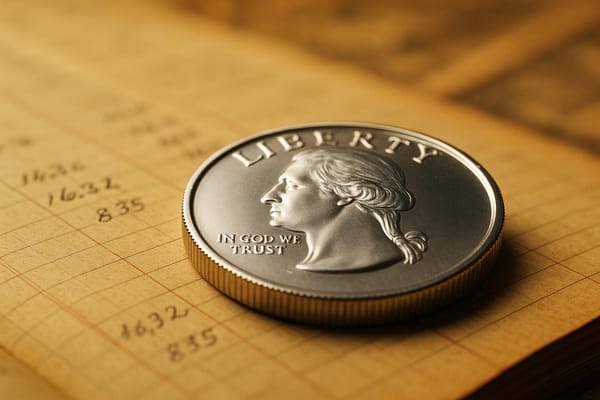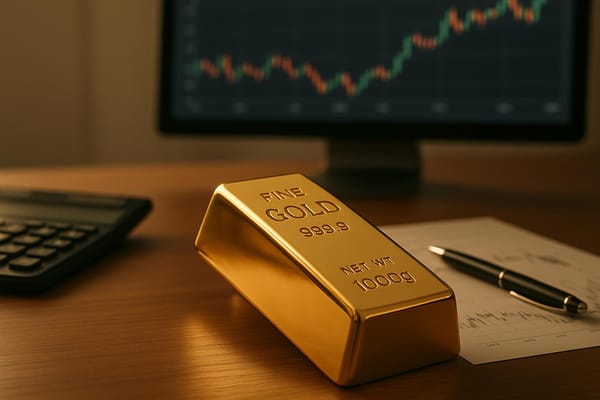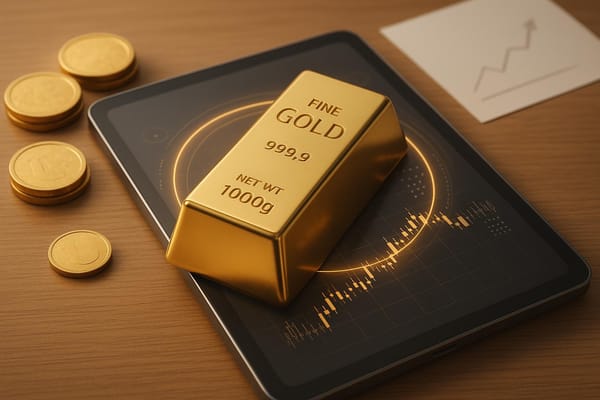Seasonal Jewelry Demand and Metal Prices
Explore how seasonal jewelry demand affects gold and silver prices, offering insights for strategic investment decisions.
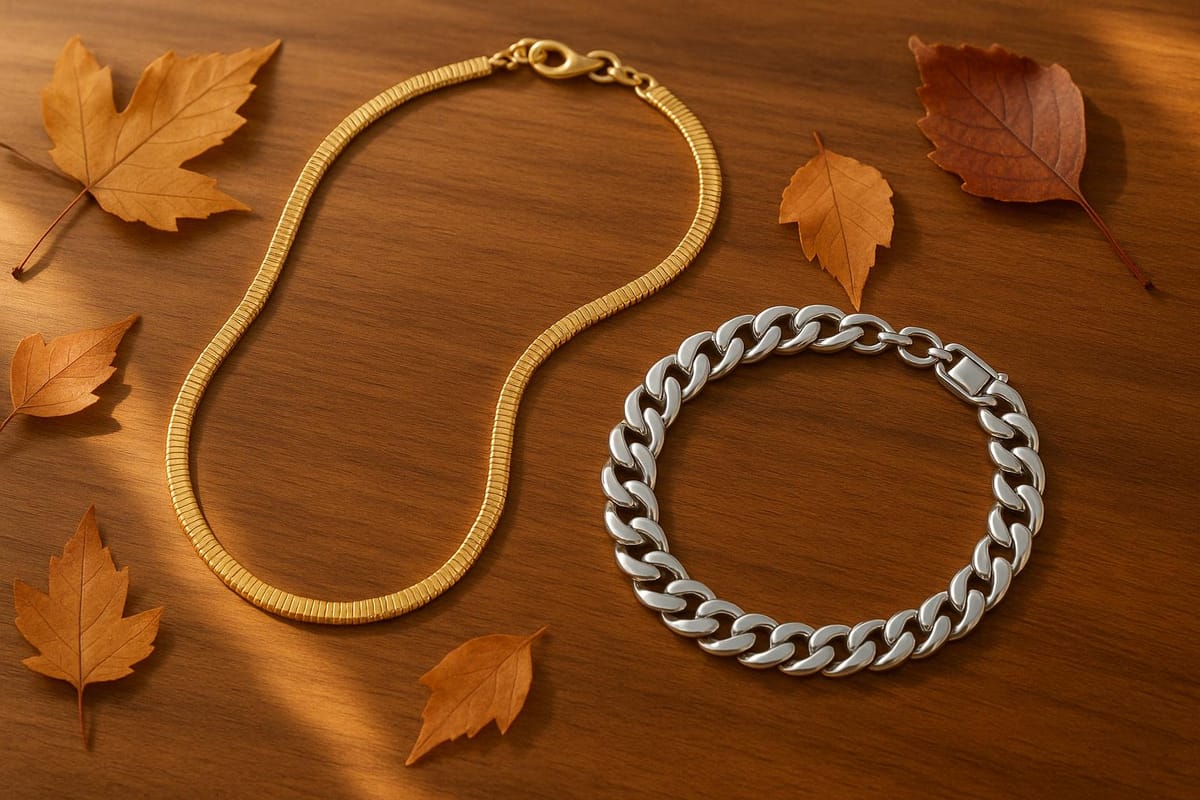
Seasonal jewelry demand directly impacts the prices of gold and silver. Key shopping events like Valentine's Day, Mother's Day, and the holiday season drive up demand, while wedding seasons (April–October) consistently boost gold and silver purchases. Gold sees smaller, steady price increases during these periods, while silver experiences sharper fluctuations due to its smaller market size and dual role in jewelry and industrial applications.
Key Insights:
- Gold: Stable pricing with minor seasonal increases; ideal for long-term investment.
- Silver: Higher price volatility, offering short-term profit opportunities during peak demand.
- Timing Matters: Buying during low-demand periods and selling when demand peaks can maximize returns.
Economic factors, global events, and regional preferences also influence these trends, making market awareness crucial for investors. Balancing gold's stability with silver's growth potential can help build a well-rounded investment strategy.
1. Gold Price Changes
Seasonal Demand Impact
Gold prices often reflect seasonal trends, largely driven by the demand for jewelry during spring, fall, and the holiday season. These periods typically see heightened activity in the jewelry market, which can push prices upward. Events like Diwali also showcase how international celebrations influence gold demand, even when the primary market lies overseas.
Price Volatility
Gold prices tend to rise steadily during these seasonal surges. Conversely, during months of lower demand, prices may dip as inventories stabilize. Summer months generally bring more consistent and stable pricing, reflecting the ebb and flow of seasonal jewelry demand.
Market Sensitivity to Jewelry Demand
When the economy is strong, luxury spending increases, amplifying the impact of seasonal demand on gold prices. However, during uncertain economic times, gold’s role as a safe-haven asset often takes precedence, which can overshadow the typical seasonal trends. Regional preferences also come into play - U.S. buyers often drive demand around holidays and weddings, while other regions may see spikes tied to local celebrations and traditions.
Investment Considerations
For investors, understanding these seasonal patterns can be a strategic advantage. Buying during periods of lower demand and selling when demand peaks can potentially lead to better returns. Timing investments to align with these cycles not only offers opportunities for profit but also helps diversify an investment portfolio.
2. Silver Price Changes
Seasonal Demand Impact
Silver sees noticeable seasonal shifts in demand, especially during popular events like Valentine's Day, Mother's Day, the holidays, and wedding seasons. Its affordability and popularity in fashion jewelry make it a go-to choice for many shoppers. Spring and fall wedding seasons, in particular, drive up purchases of engagement rings, wedding bands, and accessories.
Additionally, silver plays a big role in fashion jewelry, with trendy and bold statement pieces often gaining traction during key shopping periods. This dual use - both as a fashionable accessory and for industrial purposes - adds to its seasonal demand swings.
Price Volatility
Silver's smaller market size and heightened demand for jewelry contribute to its price volatility, especially during peak seasons. While the summer months may offer more stable pricing due to normalized demand and increased industrial use, disruptions like supply chain issues or shifts in industrial needs can quickly upset this balance. These fluctuations highlight silver's vulnerability to changes in consumer and industrial demand.
Market Sensitivity to Jewelry Demand
Economic and social factors have a significant impact on silver prices. Just like gold, silver's value often reflects the state of the economy and consumer spending habits. In times of economic growth, silver's affordability as a luxury item makes it more appealing, while evolving fashion trends and regional preferences further shape demand. For instance, U.S. consumers often favor silver for everyday wear, while other regions may prioritize traditional ceremonial designs.
Investment Considerations
For investors, silver's seasonal price swings offer opportunities for strategic gains. However, industrial demand can offset the peaks driven by jewelry sales, especially during economic downturns. Understanding the balance between these factors is crucial for navigating the challenges and rewards of silver investments.
Pros and Cons
Understanding the upsides and downsides of gold and silver during seasonal demand spikes can help guide smarter investment choices. Each metal brings its own set of strengths and challenges, especially when jewelry demand surges during holidays, weddings, and other special occasions. Let’s break it down.
Gold's biggest strength during these seasonal spikes is its price stability. Thanks to its large market size and consistently high trading volumes, even significant increases in jewelry demand typically cause only minor price changes. This makes gold an attractive option for conservative investors who prioritize long-term value preservation. Its reputation as a reliable store of value remains solid, even during times of heightened demand.
That said, gold's stability can also be a drawback for those looking for quick gains. Its higher price point often requires a larger initial investment, which may not be feasible for smaller investors. Additionally, the modest price movements during seasonal peaks limit its potential for short-term profits.
Silver, on the other hand, offers a different kind of opportunity. Its higher volatility and smaller market size mean it has the potential for greater price swings during periods of increased demand. Silver’s lower price makes it a popular choice during gift-giving seasons, often leading to noticeable demand spikes. Plus, its dual role in jewelry and industrial applications can further boost its demand during peak times, potentially driving prices higher.
However, this same volatility can work against silver. If seasonal demand doesn’t match expectations or if industrial demand shifts unexpectedly, silver’s price can drop quickly. While its affordability makes it accessible to more investors, those looking to build meaningful exposure may need to purchase larger quantities, which can add complexity.
| Factor | Gold | Silver |
|---|---|---|
| Price Stability | Generally stable with minor seasonal shifts | More prone to seasonal price swings |
| Investment Cost | Requires a larger initial investment | More affordable for smaller budgets |
| Profit Potential | Offers steady, long-term returns | Higher short-term gains but with more risk |
| Market Liquidity | Highly liquid and established | Active liquidity but on a smaller scale |
| Demand Influences | Driven by luxury purchases and value storage | Influenced by fashion trends and industries |
Timing is another key factor. Gold is better suited for long-term strategies across different market cycles, while silver often aligns with short-term opportunities during peak demand periods.
In the end, the risk and reward dynamics of these metals vary during seasonal highs. Gold offers consistent, moderate returns with lower risk, making it ideal for cautious investors or those focused on portfolio stability. Silver, by contrast, offers the potential for higher rewards, but it requires a greater tolerance for risk and more active market tracking.
Many investors choose to balance these metals - using gold for its stability and silver for its potential seasonal gains - to create a portfolio that performs well even during peak demand.
Conclusion
Seasonal demand for jewelry creates noticeable patterns in gold and silver prices, offering opportunities for informed investors. For instance, during high-demand periods like Christmas and Valentine's Day, gold prices often see slight increases, while silver tends to experience more pronounced fluctuations. This reflects silver's smaller market size and its dual use in both industrial applications and jewelry.
While timing is important, understanding the characteristics of each metal is just as critical. Gold's steady nature and liquidity make it a strong choice for preserving wealth over the long term. On the other hand, silver's higher volatility can present short-term opportunities, especially around seasonal events such as wedding seasons and holidays. However, silver's variability demands a more cautious and active management approach.
To navigate these dynamics, investors can refine their strategies by using methods like dollar-cost averaging throughout the year. This approach helps mitigate the risks of buying during seasonal price peaks. A balanced portfolio often includes a larger allocation to gold for its stability and a smaller portion to silver for its growth potential.
For those looking to stay ahead of market trends, Gold and Silver.net provides weekly market analysis and investment insights. Their detailed reports cover price movements, demand trends, and actionable strategies, making it a valuable resource for both beginners and experienced investors exploring the complexities of precious metals markets.
Ultimately, a successful investment strategy combines seasonal insights with a comprehensive understanding of broader economic trends. While seasonal demand plays a role in shaping gold and silver prices, macroeconomic factors often exert a more lasting influence. By integrating these seasonal patterns into a well-rounded approach, investors can better position themselves to take advantage of the opportunities these markets present.
Whether you're starting your first precious metals portfolio or expanding an existing one, aligning your investments with seasonal demand trends can enhance your strategy. When paired with broader market knowledge and thoughtful planning, these insights can help you achieve measurable results in the ever-evolving world of precious metals.
FAQs
How do seasonal trends and global events impact the demand and prices of gold and silver?
Seasonal patterns, like holidays and wedding seasons, significantly influence the demand for gold and silver. In the United States and other regions with vibrant seasonal traditions, autumn and winter often see a surge in purchases driven by festivals and gift-giving customs.
Global events also leave their mark. Periods of economic uncertainty - such as rising inflation, geopolitical tensions, or financial instability - tend to steer investors toward gold and silver, widely regarded as safe-haven assets. This shift in investor behavior can lead to noticeable price swings during times of market turbulence or global unrest.
These seasonal and global influences combine to create recurring trends in the demand and pricing of precious metals, shaping market dynamics both locally and worldwide.
How can investors make the most of seasonal silver price changes?
Investors looking to make the most of silver's seasonal price patterns can benefit from strategic timing. Historically, silver prices often drop during periods of lower demand, like the early summer months of June. This makes it a prime opportunity for buyers. On the flip side, prices tend to climb during high-demand months, such as March and September, presenting a potential window for profitable sales.
Another factor to consider is the seasonal demand for jewelry, which typically spikes around holidays and festive seasons. For instance, purchasing silver in advance of demand increases in July and August could set investors up to capitalize on potential price rises later in the year. Understanding and leveraging these trends can be a smart way to enhance returns in the silver market.
How does understanding seasonal trends in jewelry demand impact gold and silver investments?
Seasonal shifts in jewelry demand, particularly around the holidays and wedding season, play a big role in shaping gold and silver prices. Knowing these patterns can help investors make smarter decisions about when to buy, especially during high-demand times like late fall and early winter when prices often rise.
By timing investments to match these trends, you might boost returns while steering clear of inflated costs during peak seasons. On the flip side, recognizing periods of typically lower demand - such as the summer months - can open up opportunities to purchase at more favorable prices, helping you maintain a well-rounded and thoughtful investment strategy.
